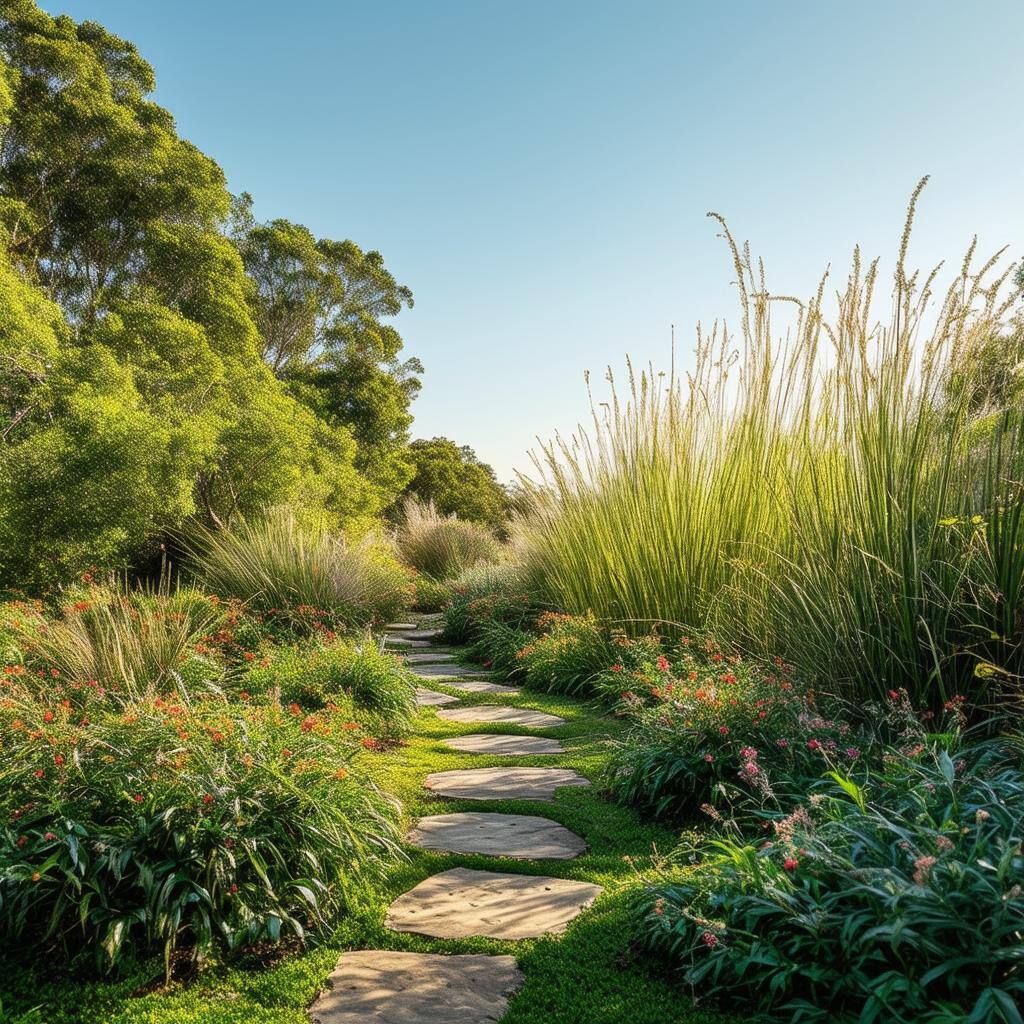Transform Your Garden with Native Grasses and Ground Covers
Imagine stepping into a garden where the gentle sway of native grasses dances in the breeze, and lush ground covers weave a vibrant tapestry beneath your feet. This vision can become your reality by embracing the beauty and resilience of native Australian flora. Incorporating native grasses and ground covers not only elevates the aesthetic appeal of your outdoor space but also fosters a harmonious ecosystem that thrives with minimal intervention.
Understanding Native Grasses
Native grasses are the unsung heroes of Australian landscapes. These perennial plants have evolved over millennia to withstand the continent's diverse climates, making them exceptionally hardy and drought-tolerant. Species such as Poa labillardierei (Common Tussock Grass) and Themeda triandra (Kangaroo Grass) are celebrated for their graceful foliage and adaptability. Their deep root systems not only stabilize soil but also enhance water infiltration, reducing erosion and promoting soil health.
Exploring Native Ground Covers
Ground covers serve as the living carpet of your garden, providing a seamless blend between various plantings while suppressing weeds and conserving soil moisture. Native options like Grevillea 'Poorinda Royal Mantle' and Scaevola aemula (Fan Flower) offer vibrant blooms and foliage that attract pollinators and beneficial insects. These low-growing plants are perfect for filling gaps, covering slopes, or creating a lush understorey beneath taller shrubs and trees.
Benefits of Using Native Species
Embracing native grasses and ground covers brings a multitude of benefits:
-
Environmental Advantages: Native plants are acclimated to local conditions, requiring less water and fertilizers, thus conserving resources and reducing chemical runoff.
-
Low-Maintenance Landscaping: Once established, these species demand minimal care, freeing up your time and reducing garden upkeep.
-
Biodiversity Enhancement: Native flora provides habitat and food for indigenous wildlife, supporting birds, insects, and other fauna, thereby enriching the local ecosystem.
Designing with Native Grasses and Ground Covers
Integrating native species into your garden design requires thoughtful planning:
-
Assess Your Space: Evaluate sunlight exposure, soil type, and moisture levels to select appropriate species that will flourish in your garden's microclimates.
-
Layering Plants: Combine taller native grasses with low-lying ground covers to create depth and visual interest. For instance, pairing the upright form of Poa labillardierei with the sprawling habit of Grevillea 'Poorinda Royal Mantle' can produce a dynamic and cohesive look.
-
Seasonal Interest: Choose a variety of species that offer year-round appeal through differing textures, colors, and flowering periods.
Planting and Maintenance
Establishing a thriving native garden involves:
-
Soil Preparation: Amend the soil with organic matter to improve fertility and drainage. While native plants are adaptable, well-prepared soil sets the stage for robust growth.
-
Planting Techniques: Plant during the cooler months to allow roots to establish before the onset of heat. Space plants appropriately to accommodate their mature size and to ensure adequate air circulation.
-
Ongoing Care: Water new plantings regularly until established. Thereafter, most native species will thrive on natural rainfall. Minimal pruning is required, but removing spent flowers or damaged foliage can maintain a tidy appearance.
Case Studies and Success Stories
Consider the transformation of urban parks that have replaced traditional lawns with native grasses and ground covers. These spaces not only exhibit enhanced beauty but also support increased biodiversity and require less maintenance. Home gardeners have reported similar successes, noting that their native plantings attract a plethora of birds and butterflies, creating a lively and dynamic environment.
By embracing native grasses and ground covers, you are not merely cultivating a garden; you are fostering a resilient ecosystem that celebrates Australia's rich botanical heritage. This approach offers a sustainable and enchanting solution for gardeners seeking to harmonize beauty with environmental stewardship.




